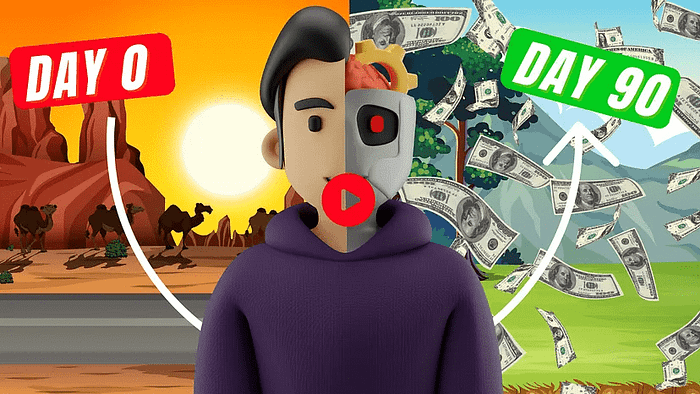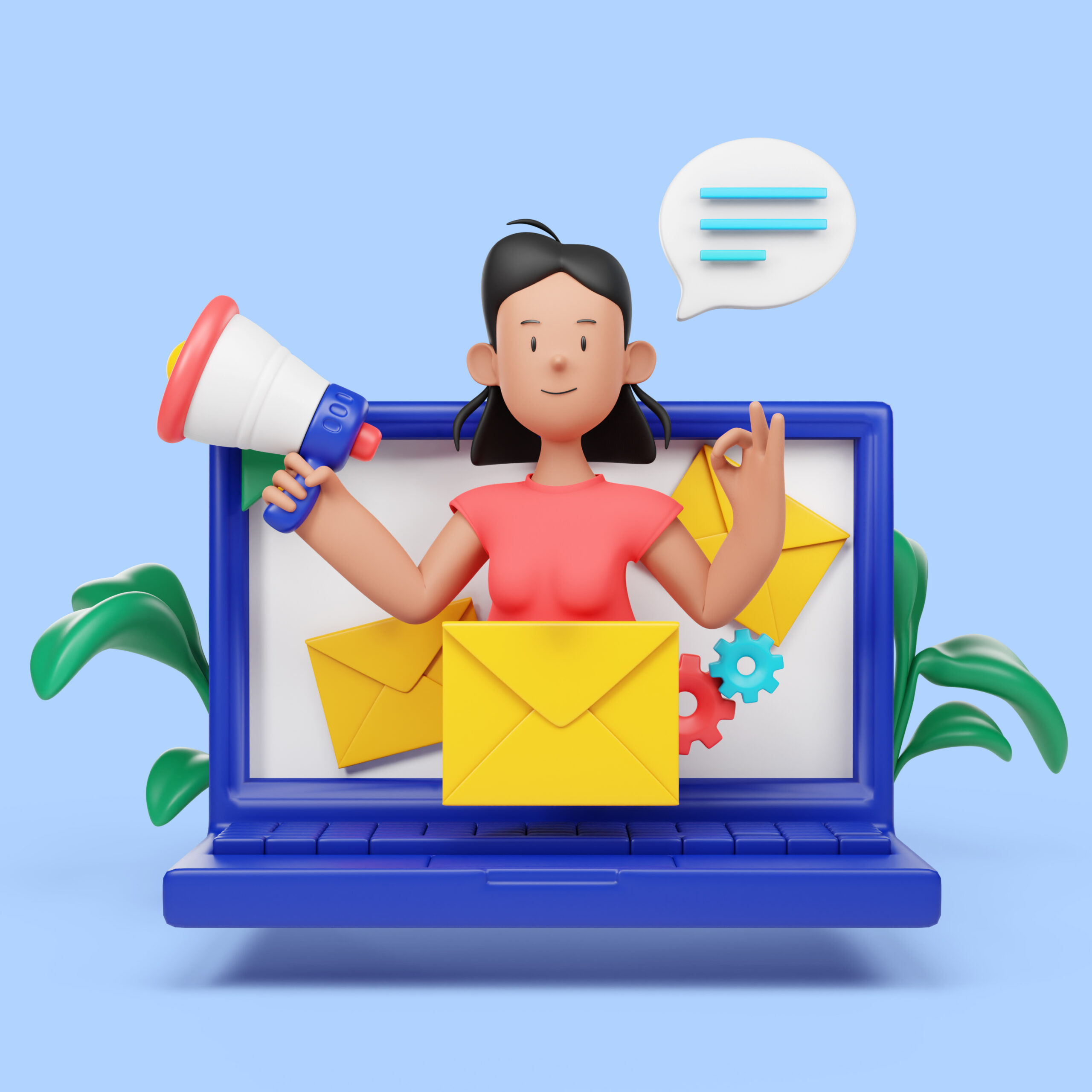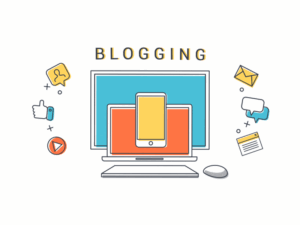In today’s digital age, email marketing has become an indispensable tool for small businesses looking to engage with their customers, promote their products or services, and ultimately drive sales.
Email marketing offers a cost-effective and targeted approach to reaching your audience, allowing you to build lasting relationships and foster brand loyalty.
However, with so many businesses vying for attention in people’s inboxes, it’s crucial to implement effective strategies that will help your emails stand out and achieve your desired results.
In this article, we’ll explore ten essential email marketing strategies that every small business owner should know and apply to their campaigns.
By leveraging these proven tactics, you can enhance your email marketing efforts, improve your open and click-through rates, and ultimately boost your bottom line.
Whether you’re new to email marketing or looking to refine your existing strategies, these tips will provide you with the insights and guidance needed to take your small business’s email marketing to the next level.
So, let’s dive in and discover how you can harness the power of email marketing to grow your small business and achieve your goals.
We strongly recommend that you check out our guide on how to take advantage of AI in today’s passive income economy.
Table of Contents
Building a Quality Email List
1. Offer Valuable Incentives
One of the most effective ways to grow your email list is by offering valuable incentives to your target audience.
This could be in the form of exclusive discounts, free resources, or access to premium content.
By providing something of value in exchange for an email address, you’re more likely to attract high-quality subscribers who are genuinely interested in your business.
When crafting your incentive, consider what would be most appealing and relevant to your target audience.
For example, if you run a fitness studio, you could offer a free workout guide or a discount on their first class.
Make sure your incentive aligns with your brand and provides real value to your potential subscribers.
Remember, the goal is not just to grow your list, but to attract engaged and loyal subscribers who are more likely to convert into customers.
2. Leverage Social Media
Social media platforms provide an excellent opportunity to expand your email list and reach a wider audience.
By promoting your email newsletter or incentives on your social media channels, you can tap into your existing follower base and encourage them to sign up.
Make sure to include clear calls-to-action (CTAs) in your social media posts, directing users to a landing page where they can easily subscribe to your email list.
You can also run targeted social media ads to reach new audiences who are likely to be interested in your business.
Facebook and Instagram, for example, offer robust targeting options that allow you to narrow down your ad’s reach based on demographics, interests, and behaviors.
By leveraging social media to grow your email list, you can not only increase your subscriber base but also foster a sense of community and engagement around your brand.
3. Optimize Your Website for Email Sign-ups
Your website is one of the most powerful tools for growing your email list, as it serves as the primary destination for people interested in your business.
To maximize your website’s potential for email sign-ups, make sure to prominently display opt-in forms throughout your site.
This includes placing sign-up forms on your homepage, blog posts, and key landing pages.
Consider using pop-ups or slide-ins to capture visitors’ attention and encourage them to subscribe.
However, be mindful of the user experience and avoid overly intrusive or annoying pop-ups that may deter potential subscribers.
In addition to strategically placing opt-in forms, ensure that the sign-up process is simple and straightforward.
Minimize the number of fields required, as lengthy forms can discourage people from subscribing.
Finally, clearly communicate the benefits of signing up for your email list, such as exclusive offers, valuable content, or personalized recommendations.
By optimizing your website for email sign-ups, you can effectively convert website visitors into subscribers and nurture them into loyal customers.
Crafting Engaging Email Content
4. Segment Your Email List
One of the keys to creating engaging email content is segmenting your email list based on subscriber preferences, behavior, and demographics.
By dividing your list into smaller, targeted groups, you can tailor your messaging and offers to better resonate with each segment’s interests and needs.
For example, if you own an e-commerce store, you could segment your list based on purchase history, sending personalized product recommendations to each group.
Or, if you run a non-profit organization, you could segment your list based on donation history or engagement level, sending targeted appeals or event invitations to each segment.
Segmentation allows you to deliver more relevant and valuable content to your subscribers, increasing the likelihood of engagement and conversion.
It also helps you avoid sending generic, one-size-fits-all emails that may fall flat with your audience.
To effectively segment your list, start by gathering data on your subscribers through sign-up forms, surveys, and website behavior tracking.
Use this information to create segments based on common characteristics or interests.
As you continue to gather data and insights, refine your segments over time to ensure your email content remains highly targeted and effective.
5. Personalize Your Emails
In addition to segmentation, personalization is another powerful strategy for creating engaging email content.
By adding a personal touch to your emails, you can build stronger connections with your subscribers and make them feel valued and appreciated.
One simple way to personalize your emails is by addressing subscribers by name in the subject line or greeting.
This small gesture can go a long way in making your emails feel more intimate and less like generic marketing messages.
You can also personalize your emails based on subscriber behavior or preferences.
For example, if a subscriber has shown interest in a particular product category, you could send them targeted product recommendations or exclusive offers related to that category.
Or, if a subscriber has recently made a purchase, you could send them a personalized thank-you note or follow-up email to nurture the relationship.
Personalization can also extend to the timing and frequency of your emails.
By analyzing subscriber engagement data, you can determine the optimal times and days to send your emails, as well as the ideal frequency for each segment.
By personalizing your emails in these ways, you can create a more engaging and effective email marketing strategy that resonates with your audience and drives results.
6. Focus on Providing Value
One of the most important aspects of creating engaging email content is focusing on providing value to your subscribers.
Rather than solely promoting your products or services, aim to deliver content that educates, inspires, or entertains your audience.
By consistently providing valuable content, you can establish your business as a trusted authority in your industry and build lasting relationships with your subscribers.
Consider the needs and interests of your target audience when developing your email content strategy.
What challenges or pain points do they face, and how can your expertise help address them?
What topics or trends are currently resonating with your audience, and how can you provide unique insights or perspectives?
By answering these questions, you can create email content that genuinely benefits your subscribers and keeps them engaged with your brand.
In addition to educational or informative content, consider incorporating storytelling into your emails.
Share behind-the-scenes glimpses of your business, highlight customer success stories, or showcase your brand’s personality and values.
By humanizing your brand through storytelling, you can create a more emotional connection with your subscribers and differentiate yourself from competitors.
Remember, the goal of your email content should be to provide value first and promote second.
By consistently delivering valuable content, you can build trust, credibility, and loyalty with your subscribers, ultimately leading to increased engagement and conversions.
7. Craft Compelling Subject Lines
Your email subject line is the first impression your subscribers have of your email, and it can make or break your open rates and engagement levels.
A compelling subject line should be clear, concise, and attention-grabbing, enticing subscribers to open and read your email.
When crafting your subject lines, consider using actionable language that creates a sense of urgency or excitement.
For example, instead of a generic subject line like “Monthly Newsletter,” try something more specific and compelling like “5 Must-Try Recipes for Your Summer BBQ.”
You can also use personalization in your subject lines to increase relevance and engagement.
For example, if you’re sending a birthday email, include the subscriber’s name in the subject line, such as “Happy Birthday, [Name]! Claim Your Special Gift Inside.”
Another effective strategy is to use numbers or lists in your subject lines, as they can make your emails more scannable and digestible.
For example, “10 Tips for Better Email Marketing” or “3 Secrets to Boosting Your Open Rates.”
Finally, consider using emojis in your subject lines to add visual interest and stand out in crowded inboxes.
However, use them sparingly and ensure they align with your brand voice and audience preferences.
By crafting compelling subject lines that grab attention and create curiosity, you can increase your email open rates and set the stage for more engaging and effective email content.
8. Optimize for Mobile
With more and more people accessing their emails on mobile devices, it’s crucial to optimize your email content for mobile viewing.
If your emails are not mobile-friendly, you risk losing engagement and potentially damaging your reputation with subscribers.
To optimize your emails for mobile, start by using a responsive email template that automatically adjusts to different screen sizes and devices.
This ensures that your email content is easily readable and navigable, regardless of whether subscribers are viewing it on a desktop, tablet, or smartphone.
In addition to using a responsive template, keep your email content concise and easy to scan on smaller screens.
Use short paragraphs, bullet points, and clear headings to break up your content and make it more digestible.
Avoid using large images or complex layouts that may not render properly on mobile devices.
Another important consideration for mobile optimization is the placement and size of your call-to-action (CTA) buttons.
Make sure your CTA buttons are prominent and easily clickable on smaller screens, using contrasting colors and clear, action-oriented language.
Finally, test your emails on various mobile devices and email clients to ensure they render properly and provide a seamless user experience.
By optimizing your emails for mobile, you can ensure that your content is accessible and engaging for all subscribers, regardless of how they choose to view it.
9. Test and Analyze Your Emails
To continuously improve your email marketing strategy and achieve better results, it’s essential to test and analyze your emails regularly.
By conducting A/B tests and analyzing key metrics, you can gain valuable insights into what works and what doesn’t for your audience.
A/B testing involves sending two slightly different versions of an email to a small portion of your list and comparing the results.
You can test various elements of your email, such as the subject line, content, layout, or CTA, to determine which version performs better.
By iterating on your tests and applying the insights to future campaigns, you can optimize your emails for maximum engagement and conversions.
In addition to A/B testing, regularly analyze key email metrics such as open rates, click-through rates, bounce rates, and unsubscribe rates.
These metrics provide valuable insights into the health and effectiveness of your email campaigns.
For example, if you notice a high bounce rate, it may indicate issues with your email list quality or deliverability.
Or, if you see a low click-through rate, it may suggest that your content is not resonating with your audience or that your CTAs are not compelling enough.
Use these insights to continually refine and improve your email marketing strategy over time.
10. Automate Your Email Campaigns
Finally, consider automating your email campaigns to save time, improve efficiency, and deliver more timely and relevant content to your subscribers.
Email automation involves setting up triggered email sequences based on subscriber actions or behaviors, such as signing up for your list, making a purchase, or abandoning a cart.
By automating these types of emails, you can ensure that your subscribers receive the right message at the right time, without requiring manual effort on your part.
For example, you could set up a welcome email series for new subscribers that introduces them to your brand, provides valuable resources, and encourages them to make their first purchase.
Or, you could set up an abandoned cart email sequence that reminds subscribers of items they left in their cart and offers an incentive to complete their purchase.
In addition to triggered email sequences, you can also automate your regular email campaigns, such as newsletters or promotional offers.
By scheduling your emails in advance and using dynamic content that updates automatically based on subscriber data, you can streamline your email marketing process and ensure that your content remains fresh and relevant.
When setting up your email automation, be sure to map out your subscriber journey and identify key touchpoints where automated emails can add value and drive engagement.
Also, consider the timing and frequency of your automated emails to avoid overwhelming subscribers or coming across as spammy.
By leveraging email automation strategically, you can create a more efficient and effective email marketing strategy that nurtures subscribers and drives long-term business growth.
In conclusion, email marketing is a powerful tool for small businesses looking to engage with their audience, build relationships, and drive conversions.
By implementing these ten essential email marketing strategies, you can create a more targeted, personalized, and engaging email marketing program that resonates with your subscribers and achieves your business goals.
Remember to continually test, analyze, and refine your approach based on data and insights, and always prioritize providing value to your subscribers above all else.
With dedication, creativity, and a customer-centric mindset, you can harness the power of email marketing to take your small business to new heights.
FAQ
What are the 4 types of email marketing?
There are four main types of email marketing:
Promotional Emails: These emails are designed to promote a product, service, or special offer. They often include discounts, limited-time deals, or new product announcements to encourage subscribers to make a purchase.
Newsletter Emails: Newsletters are regularly scheduled emails that provide subscribers with valuable content, such as industry news, tips, insights, or company updates. They help to keep subscribers engaged and informed, while also nurturing the relationship between the brand and the audience.
Transactional Emails: These emails are triggered by a specific action taken by the subscriber, such as making a purchase, signing up for an account, or requesting a password reset. They often include important information related to the transaction, such as order confirmations, shipping updates, or account notifications.
Behavioral Emails: Behavioral emails are triggered by specific subscriber actions or behaviors, such as abandoning a cart, browsing certain products, or reaching a milestone. They are highly personalized and targeted, designed to encourage subscribers to take a desired action or re-engage with the brand.
How to create an email marketing strategy?
To create an effective email marketing strategy, follow these steps:
Define Your Goals: Clearly identify what you want to achieve with your email marketing, such as increasing sales, driving website traffic, or building brand awareness.
Build Your Email List: Grow your email list by offering valuable incentives, leveraging social media, and optimizing your website for email sign-ups.
Segment Your Audience: Divide your email list into smaller, targeted groups based on subscriber preferences, behavior, and demographics to deliver more relevant and personalized content.
Develop Your Content Strategy: Plan and create engaging email content that provides value to your subscribers, such as educational resources, promotional offers, or company updates.
Design Your Emails: Use a responsive email template that is optimized for mobile viewing, and create visually appealing and easy-to-read emails that align with your brand identity.
Test and Analyze: Regularly conduct A/B tests and analyze key email metrics to continually improve your email marketing performance and achieve better results.
Automate Your Campaigns: Leverage email automation to send targeted and timely emails based on subscriber actions or behaviors, such as welcome series, abandoned cart emails, or post-purchase follow-ups.
How do I work in email marketing?
To work in email marketing, you can follow these steps:
Build Your Skills: Develop a strong foundation in email marketing best practices, including email design, copywriting, list management, and analytics. Consider taking online courses, attending workshops, or earning certifications to enhance your knowledge and credibility.
Gain Practical Experience: Look for opportunities to apply your email marketing skills in real-world settings, such as internships, freelance projects, or volunteer work. This will help you build a portfolio of work and demonstrate your abilities to potential employers.
Stay Up-to-Date: Stay current with the latest email marketing trends, technologies, and best practices by reading industry blogs, attending conferences, and participating in online communities.
Network and Apply: Build relationships with other email marketing professionals, attend industry events, and join relevant online groups to expand your network and learn about job opportunities. Apply for email marketing positions that align with your skills and experience, and be prepared to showcase your knowledge and portfolio in interviews.
How do I become an email marketer?
To become an email marketer, follow these steps:
Acquire the Necessary Skills: Develop expertise in email marketing strategy, email design, copywriting, list management, and analytics. Pursue relevant education, such as a degree in marketing, communications, or a related field, and consider earning email marketing certifications.
Gain Practical Experience: Look for opportunities to apply your email marketing skills through internships, freelance work, or personal projects. This will help you build a portfolio of work and demonstrate your abilities to potential employers.
Build Your Network: Attend industry events, join online communities, and connect with other email marketing professionals to expand your network and learn about job opportunities.
Create a Strong Resume and Portfolio: Highlight your email marketing skills, experience, and achievements in your resume and portfolio. Showcase examples of successful email campaigns you have created and the results they achieved.
Apply for Email Marketing Positions: Search for email marketing job openings that align with your skills and experience. Tailor your resume and cover letter to each position, emphasizing how your qualifications make you a strong fit for the role.
Prepare for Interviews: Be prepared to discuss your email marketing experience, knowledge, and strategies in job interviews. Provide examples of how you have successfully created and executed email campaigns in the past, and demonstrate your passion for the field.
Continue Learning and Growing: Once you land an email marketing position, continue to stay up-to-date with industry trends and best practices. Pursue ongoing learning opportunities, such as attending conferences, taking courses, or earning additional certifications to advance your career and stay competitive in the field.

We strongly recommend that you check out our guide on how to take advantage of AI in today’s passive income economy.




